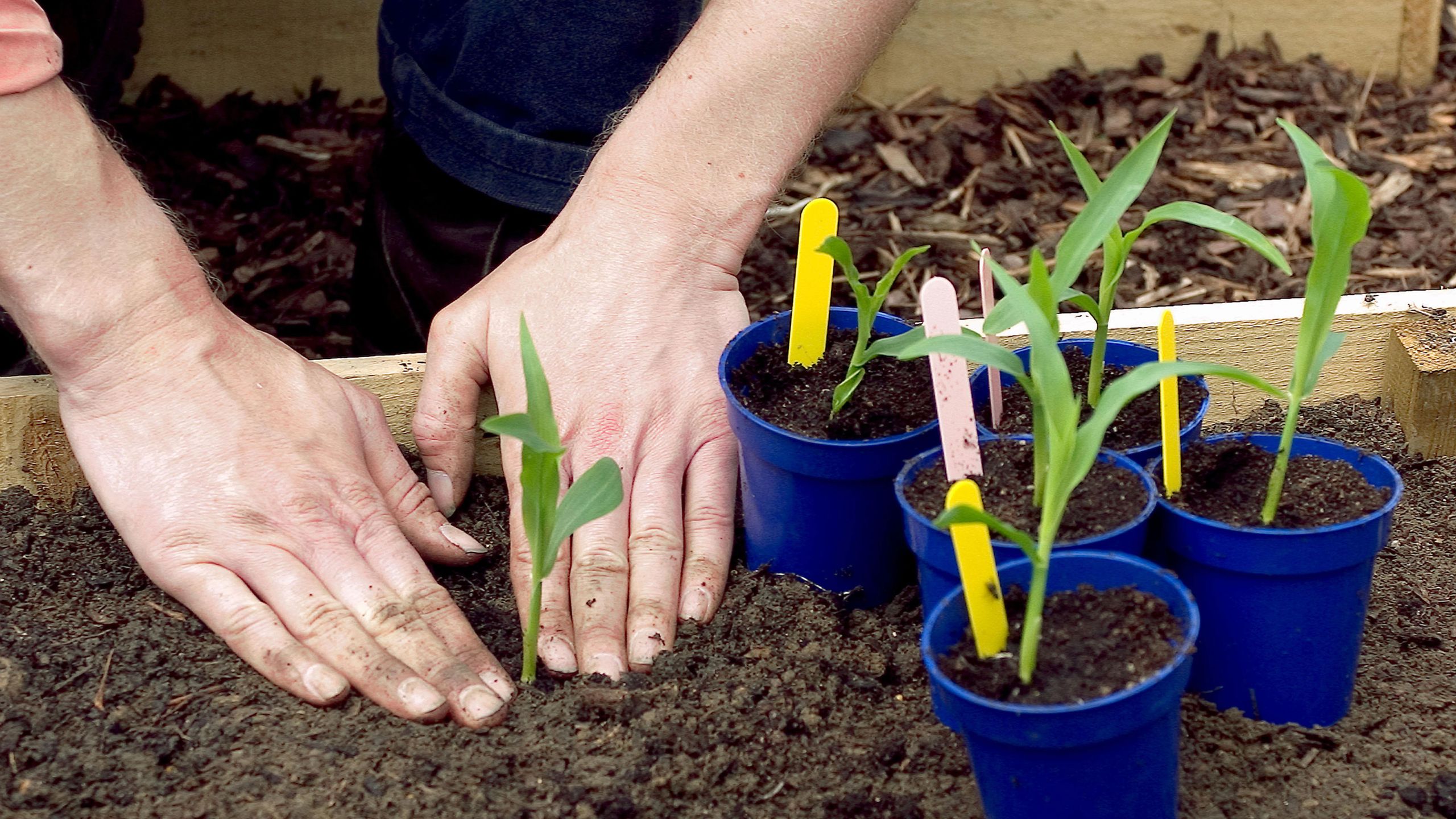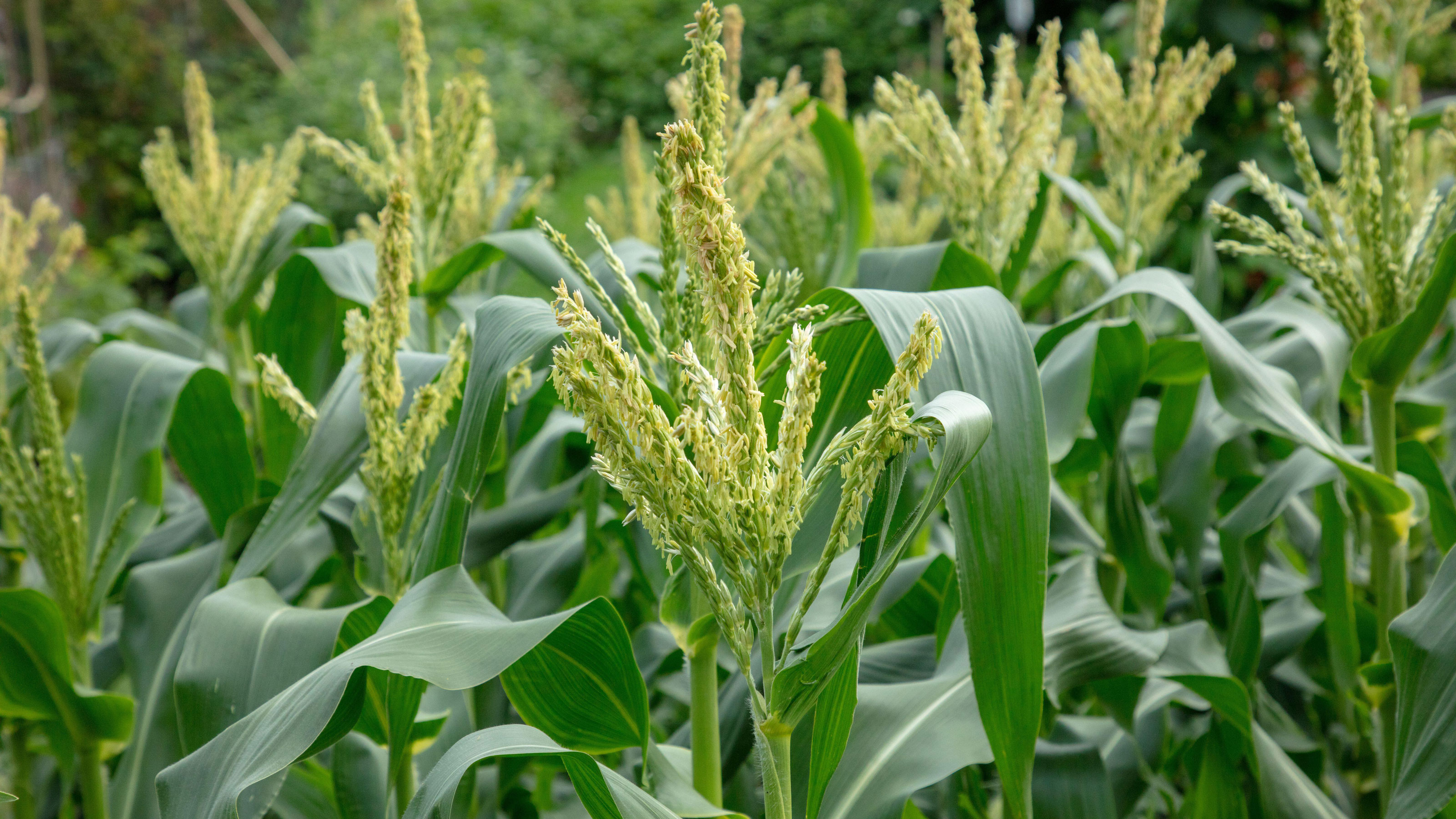Choosing the Right Corn Variety for Your Small Garden
When it comes to planting corn in a small garden, selecting the right variety is crucial for a successful harvest. With so many types of corn to choose from, it can be overwhelming to decide which one to plant. However, by considering a few key factors, you can narrow down your options and choose a variety that is well-suited for your small garden. One important factor to consider is maturity days. If you have a short growing season, look for varieties that mature quickly, such as ‘Early Sunglow’ or ‘Silver Queen’. These varieties typically take around 60-70 days to mature, making them ideal for small gardens with limited space. Another factor to consider is plant height. If you have limited vertical space, look for varieties that are compact or dwarf, such as ‘Honey & Cream’ or ‘Golden Bantam’. These varieties typically grow to be around 3-4 feet tall, making them perfect for small gardens. Finally, consider the disease resistance of the variety. If you live in an area with high humidity or rainfall, look for varieties that are resistant to diseases such as rust or blight. Some popular varieties that are resistant to disease include ‘Stowell’s Evergreen’ and ‘Country Gentleman’. By considering these factors, you can choose a corn variety that is well-suited for your small garden and will provide you with a bountiful harvest.
Preparing the Soil for Optimal Corn Growth
Before planting corn in a small garden, it’s essential to prepare the soil for optimal growth. Corn is a heavy feeder and requires a well-draining, fertile soil to produce a bountiful harvest. To achieve this, start by testing the pH level of your soil. Corn prefers a slightly acidic to neutral soil pH, ranging from 6.0 to 7.0. If your soil pH is too high or too low, adjust it accordingly by adding lime or sulfur. Next, add organic matter such as compost or well-rotted manure to improve soil fertility. This will provide essential nutrients for your corn plants to grow. Remove any debris, rocks, or weeds from the soil to ensure good drainage and prevent competition for water and nutrients. Additionally, consider using a soil conditioner or fertilizer specifically formulated for corn to provide a boost of nutrients. By preparing the soil properly, you’ll be able to provide your corn plants with the best possible start, leading to a healthy and productive harvest.
How to Plant Corn in a Small Garden for Maximum Yield
Planting corn in a small garden requires careful planning and attention to detail to ensure maximum yield. To start, choose a location that receives full sun and has well-draining soil. Corn is typically planted in late spring to early summer, when the soil has warmed up to at least 55°F (13°C). Before planting, prepare the soil by loosening it to a depth of 8-10 inches (20-25 cm) and adding a 2-inch (5 cm) layer of compost or well-rotted manure. Next, plant the corn seeds 1 inch (2.5 cm) deep and 6-8 inches (15-20 cm) apart, in rows that are 3 feet (90 cm) apart. For small gardens, consider using a square foot gardening layout, where you plant multiple seeds in a small, square bed. This will help to maximize space and increase yields. Water the soil gently but thoroughly after planting, and keep the soil consistently moist during the first few weeks after planting. As the plants grow, provide support using stakes or a trellis to keep them upright and promote better ear formation. By following these steps, you can successfully plant corn in your small garden and enjoy a bountiful harvest.
Essential Care Tips for Growing Corn in a Small Garden
Once you’ve planted your corn in a small garden, it’s essential to provide the right care to ensure a healthy and productive harvest. One of the most critical factors is watering. Corn needs about 1 inch (2.5 cm) of water per week, either from rainfall or irrigation. Make sure to water deeply and consistently, but avoid overwatering, which can lead to root rot and other problems. In addition to watering, corn also needs full sun to produce well. Choose a location that receives at least 6 hours of direct sunlight per day. Support is also crucial for corn plants, especially as they grow taller. Use stakes or a trellis to keep the plants upright and promote better ear formation. Another important aspect of corn care is pest and disease management. Keep an eye out for common pests like corn borers, earworms, and raccoons, and use organic or integrated pest management methods to control them. Regularly inspect your plants for signs of disease like rust, blight, or leaf spot, and take action promptly if you notice any problems. By following these essential care tips, you can help your corn plants thrive and produce a bountiful harvest in your small garden.
The Benefits of Companion Planting with Corn
Companion planting is a technique used to improve the growth and health of plants by pairing them with other plants that complement their needs. When it comes to planting corn in a small garden, companion planting can be a valuable strategy to enhance yields and reduce pests and diseases. One of the most beneficial companion plants for corn is the nitrogen-fixing legume, such as beans or peas. These plants convert atmospheric nitrogen into a form that can be used by the corn, reducing the need for synthetic fertilizers. Another beneficial companion plant is the pest-repellent herb, such as basil or dill. These plants release chemicals that repel common corn pests, such as aphids and earworms. Shade-providing plants, such as sunflowers or squash, can also be used to provide shade for the corn, reducing soil temperature and preventing moisture loss. Some popular companion plants for corn include radishes, which repel cucumber beetles, and nasturtiums, which repel aphids and whiteflies. By incorporating companion planting into your small garden, you can create a more diverse and resilient ecosystem that promotes healthy growth and maximizes yields.
Common Mistakes to Avoid When Growing Corn in a Small Garden
When growing corn in a small garden, there are several common mistakes to avoid in order to ensure a successful harvest. One of the most common mistakes is inadequate soil preparation. Corn requires a well-draining, fertile soil to grow, so it’s essential to test the pH level and add organic matter such as compost or well-rotted manure before planting. Another mistake is insufficient watering. Corn needs about 1 inch (2.5 cm) of water per week, either from rainfall or irrigation, so make sure to water deeply and consistently. Poor support is also a common mistake. Corn plants can grow quite tall, so provide support using stakes or a trellis to keep them upright and promote better ear formation. Additionally, avoid planting corn in the same spot year after year, as this can lead to soil-borne diseases and pests. Instead, rotate your corn crop to a new location each year. By avoiding these common mistakes, you can help ensure a healthy and productive corn crop in your small garden.
Harvesting and Storing Corn from Your Small Garden
Harvesting corn from your small garden is a rewarding experience, and with the right techniques, you can enjoy your homegrown corn for months to come. To determine if your corn is ready to harvest, check the ears for plumpness and a slight softening of the kernels. You can also check for ripeness by gently pulling back the husk and inspecting the kernels. If they are fully formed and the juice is milky, the corn is ready to harvest. To harvest, simply twist the ear from the stalk, leaving a small piece of stem attached to the ear. After harvesting, store the corn in a cool, dry place to preserve its flavor and texture. You can store the corn in airtight containers or bags, or even freeze it for later use. Another option is to dry the corn, either by air-drying it or using a food dehydrator. Dried corn can be stored for up to a year and can be used in a variety of recipes, including soups, stews, and baked goods. By following these tips, you can enjoy your homegrown corn from your small garden for months to come.
Enjoying the Fruits of Your Labor: Creative Ways to Use Homegrown Corn
After harvesting your homegrown corn from your small garden, you can enjoy it in a variety of creative ways. One of the most popular ways to use fresh corn is in recipes, such as corn on the cob, corn salad, and cornbread. You can also preserve your corn by canning, freezing, or dehydrating it, which allows you to enjoy it throughout the year. In addition to using your corn in recipes, you can also use it as a decorative element in your home. For example, you can use dried corn husks to create beautiful wreaths or other craft projects. Another creative way to use your homegrown corn is to make cornmeal, which can be used to make a variety of baked goods, such as cornbread, muffins, and cakes. You can also use your corn to make corn flour, which can be used to make tortillas, tamales, and other traditional dishes. By experimenting with different uses for your homegrown corn, you can enjoy the fruits of your labor and make the most of your small garden.







